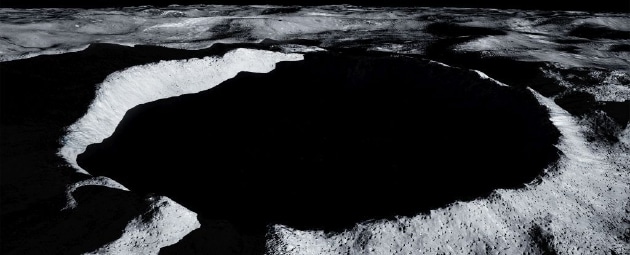We now have a better idea, and NASA has selected 13 landing areas for the future Artemis 3 mission, which will be responsible for delivering precious human supplies. Mark Kirasich, NASA’s Artemis mission director, said: “Choosing these landing sites means we’re a huge step closer to returning humans to the moon for the first time since the Apollo program! Artemis The mission is unlike any previous space mission, in which astronauts will venture into dark regions previously unexplored by humans and lay the foundation for a long-term future presence on extraterrestrial planets.”
The 13 potential landing areas are located within 6 degrees south latitude of the moon. This area is an important target for human exploration of the moon in the future, and it is also the lunar area that humans have not landed on so far, but landing here is more technically challenging than the equatorial landing zone. Therefore, the two unmanned mission phases of the Artemis mission, Artemis 1 and Artemis 2, must be completed before humans can successfully land.
However, the south pole of the moon is of great significance for exploration. The craters in this area are permanently shadowed, forming a cold trap that is almost no higher than minus 163 degrees Celsius. Scientists believe that water ice with a thickness of several meters may be hidden in the dark cold trap, which will Provide valuable resources for research and utilization for future space missions.
The 13 lunar landing areas currently selected by NASA are all about 15 square kilometers in area, and each landing area has a possible landing site with a diameter of about 200 meters. Potential landing areas are all near crater rims or ridges, permanently shadowed areas within lunar walking distance, ensuring astronauts have access to places of refuge that may have water.
NASA exploration scientist Jacob Bleacher said: “Developing a blueprint for exploring the solar system means that humans will better exploit and utilize extraterrestrial resources in the future, while maintaining the integrity of scientific exploration, from a scientific perspective. From the point of view, lunar water ice is of high value and a resource, because humans can extract oxygen and hydrogen from it, provide fuel for life support systems, and provide astronauts with the conditions necessary for life.”
Each landing area has access to sunlight, which is essential for an uninterrupted supply of solar energy and minimal temperature fluctuations, and will be a potential living area for future astronauts.
At present, scientists have focused on 8 craters, including: Faustini, Shackleton, Degrash, Amundsen, Nobilee, and Haworth. , Malapert and Leibniz craters, they will further narrow the landing area and set a final launch date.
It is reported that the launch date is closely related to factors such as flight trajectory and lunar environmental conditions, and the 13 landing sites selected by NASA are relatively more advantageous. At present, the Artemis 1 mission will launch on August 29 and return after orbiting the moon. The mission is unmanned, but there is a test dummy model on the spacecraft to collect data to understand future astronautics what physical effects crew members may experience during their space journey.




GIPHY App Key not set. Please check settings